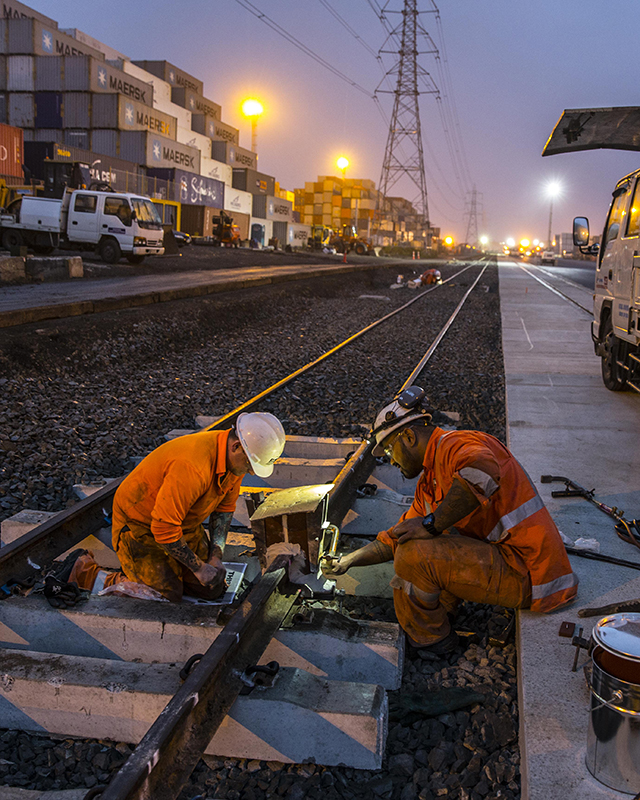Rail history
For more than 155 years, rail has played a critical role in New Zealand’s transport system.
From its early beginnings in the mid-19th century, to the present day, rail has connected people and places and helped grow our economy by delivering goods around the country and to and from our ports, connecting exporters with the world.
Early beginnings
Until the railway network was developed in the late 19th century, New Zealand’s uncompromising landscape meant overland travel was often extremely difficult.
European settlers brought with them the expectation that steam trains, the wonder of the industrial age, would solve their communication problems, open up new districts to settlement and promote economic development.
From the 1860s onwards, rail engineers designed a rail network that could operate across swamps and rivers, rugged mountains and dense forests, progressively connecting otherwise isolated communities and industries to the world.
By 1880, New Zealand Railways (NZR) was operating more than 1,900km of track, and carrying almost three million passengers and 830,000 tons of freight a year.
Opening of the Midland Railway in 1889
Ring, James, 1856-1939. Opening of the Midland Railway, Stillwater junction. Ref: 1/2-060033-F. Alexander Turnbull Library, Wellington, New Zealand. /records/22794307
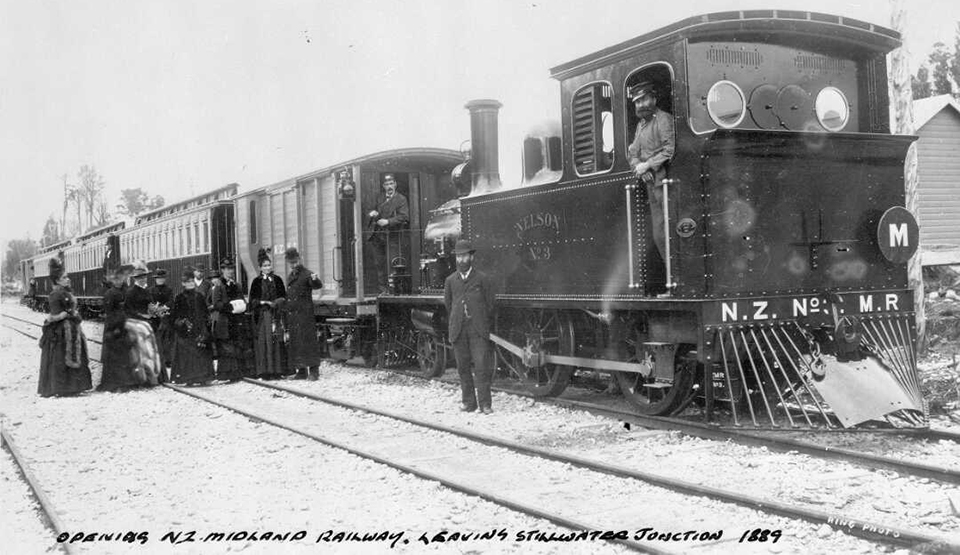
The ‘golden age’
The first half of the twentieth century was a ‘golden age' for rail. By the 1920s New Zealand Railways (NZR) was carrying more than six million tons of freight and 28 million passengers a year - a remarkable achievement for a nation of just over a million people.
Almost everyone travelling between major centres took the railway. Trains also delivered schoolchildren to the classroom, suburban workers to factories and offices, and thousands of day-trippers to beaches, parks, shows and racecourses.
From the 1950s, rail's central role in the daily life of New Zealanders began to erode, as travellers opted to drive or fly rather than use passenger trains. Branch lines around the country were progressively closed and deregulation of the transport industry saw rail’s market share of freight transport drop significantly.
A steam locomotive hauling a passenger train
Steam locomotive hauling a passenger train. Ref: APG-1999-1/4-F. Alexander Turnbull Library, Wellington, New Zealand. /records/22903033
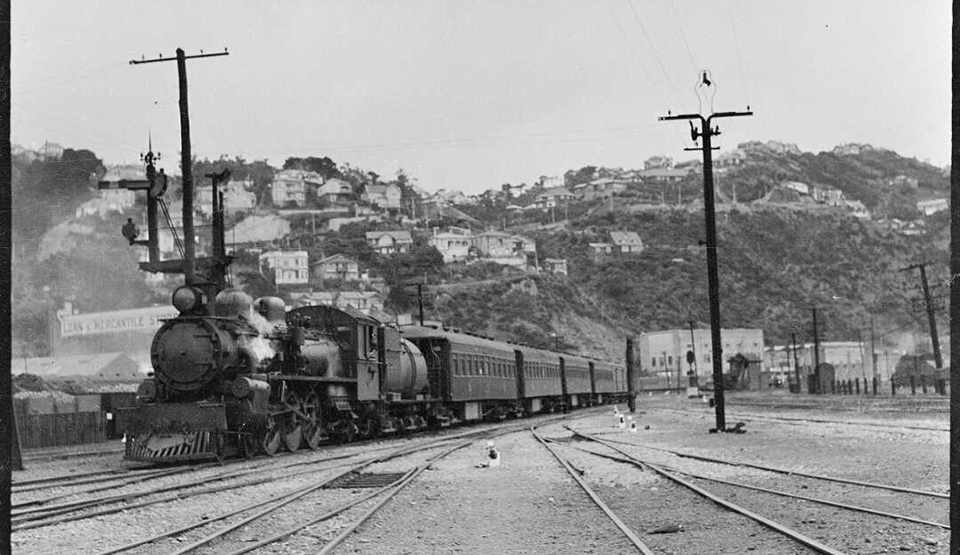
Revival of rail
With the new millennium came renewed enthusiasm for rail – globally and here in New Zealand.
Concerns about green-house gas emissions and fluctuating petrol prices, changing global freight trends and growing congestion on our roads has led to a revival of rail, and recognition of its natural advantages moving freight, tourists, urban passengers within major cities and regional commuters to work in the city.
Following years of ownership changes from 1993 when the Government sold New Zealand rail to an international consortium, rail was returned to public ownership in 2008.
Since then, successive Governments have recognised its critical role in New Zealand transport and the value it delivers to communities, regional economies, exporters and businesses.
Looking ahead
KiwiRail’s purpose: Stronger Connections. Better New Zealand encompasses the critical role we play in a sustainable and inclusive economy, taking trucks off the road, reducing carbon emissions and increasing well-being now and for future generations.
We are woven into communities across the country through our 3400 people in 50 towns and cities and we have an ambitious vision for New Zealand’s transport future.
Main North Line
The rebuild of the Main North Line following the 2016 Kaikoura earthquake was a major milestone in rail's history.

A chronological history of New Zealand rail
1862 - First railway opens - a horse-drawn tramway from Dun Mountain copper mine to Port Nelson.
1863 - First steam railway opened on the Christchurch-Lyttelton line, via the Lyttelton tunnel.
1870 - With less than 100km of track operating, Prime Minister Julius Vogel calls for railways to aid economic development, and a narrow gauge is chosen to save money.
1873 - First train in North Island, Auckland-Onehunga.
1878 - First express trains Christchurch-Dunedin cover 370km in 11 hours.
1879 - Possible to travel 600km from Christchurch to Invercargill by train.
1880 - Almost 1900km of railway open.
1886 - Wellington and Manawatu Railway Company opens line to Longburn, near Palmerston North, introducing gas lighting and dining cars.
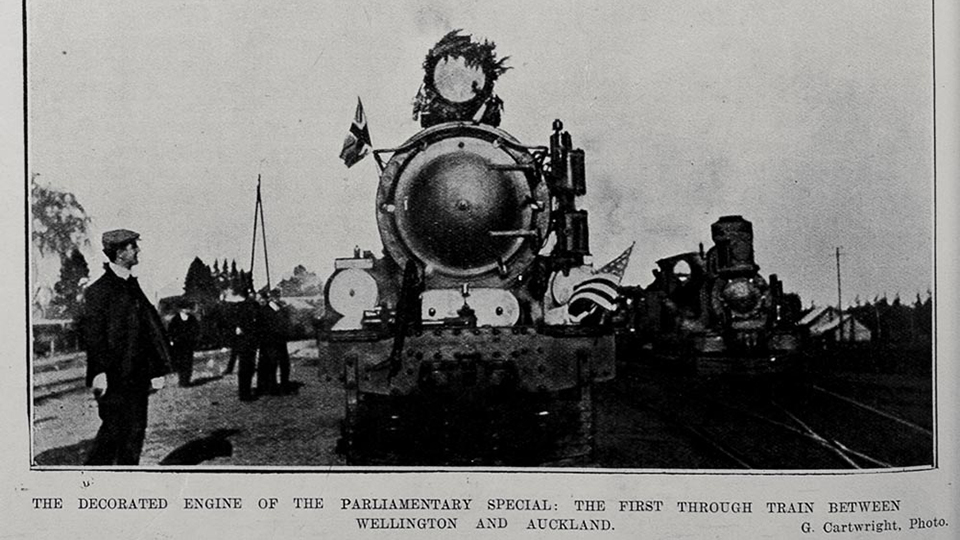
Parliamentary special
The first through train from Wellington to Auckland. Auckland Libraries Heritage Collections AWNS-19080820-14-6
1908 - North Island main trunk line completed after 23 years work - the crowning achievement of the "railway age". First train carried MPs on a junket to Auckland, in August (pictured on left).
1923 - West Coast line opens - its Otira tunnel, at 8.55km the longest in the British Empire and containing the nation's first electric railway.
1930 - Rotorua Limited introduced for tourists from Auckland, with observation car.
1936 - First successful railcars, Wairarapa route.
1945 - South Island main trunk from Christchurch to Picton completed.
1953 - The length of railway line operating hits its all-time peak - 5656km. Christmas Eve crash at Tangiwai kills 151 rail passengers.
1955 – Rimutaka tunnel opens, eclipsing Otira as the longest at 8.8km and Nelson railway closes.
1959-1971 - Numerous country branch lines closures across country as steam era comes to end and re-equipping lines with modern locomotives and updated infrastructure not considered viable.
Aramoana
Aramoana with passengers during an early sailing.
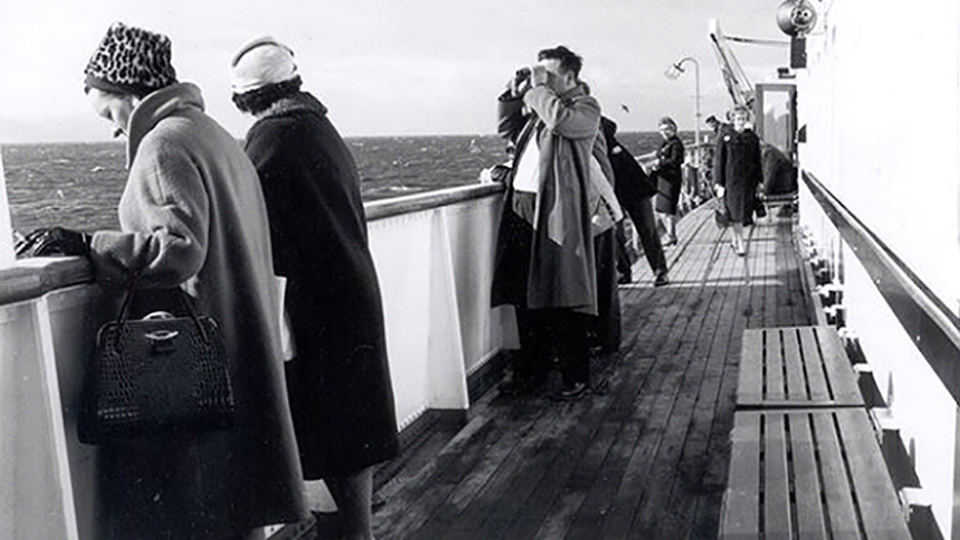
1962 – Roll on roll off rail and vehicle ferry, GMV Aramoana begins service between Picton and Wellington - the start of the Railways Department’s involvement in interisland ferry services. A second ship, Aranui enters service shortly afterwards
1971 - Last regular steam train in New Zealand
1972 – Arahanga, the first freight-only ferry, joins the Cook Strait fleet. Two years later a second freight ferry, Aratika, begins service.
Kaimai Tunnel construction
A tunnel boring machine in action during the construction of the Kaimai Tunnel in 1978.
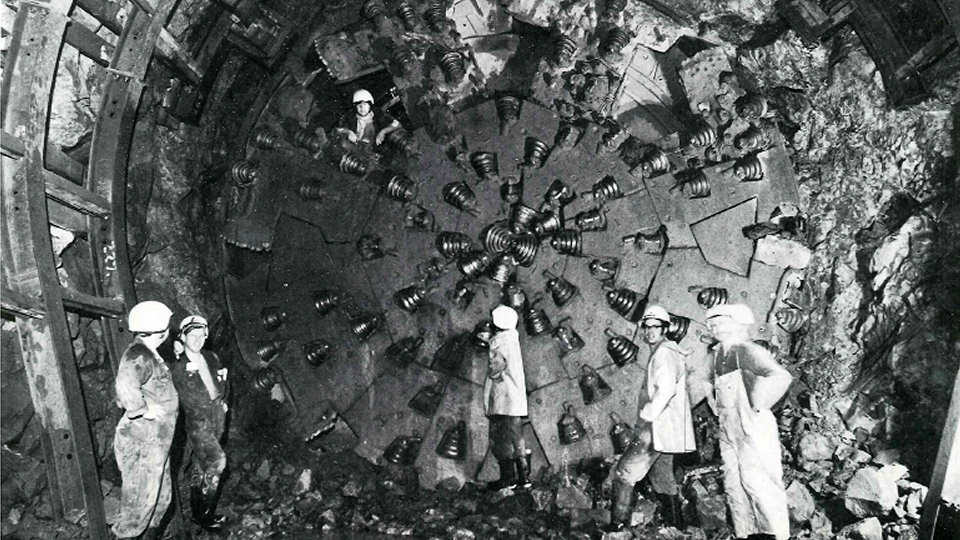
1978 – Completion of the Kaimai tunnel signals more direct freight link between Waikato and Bay of Plenty.
1982 – Railways Corporation created as statutory corporation from Railways Department.
1983 – Start of deregulation of "distance limits" on trucking companies opens railways to road-based competition. Rail employs 21,000 workers.
1984 – Electrification of North Island main trunk starts. Completed in 1988 at a cost of $250 million.
1986 – Labour government makes railways a state-owned enterprise. In six years the workforce is cut from 21,000 to 5000, while productivity of the land-based workforce is lifted 300 per cent.
1990 – Rail is restructured into a limited liability company, New Zealand Rail (NZR).
1993 - Government announces sale of NZR to a consortium of Wisconsin Central Transportation Corp and Berkshire Partners (60 per cent stake) and Fay Richwhite (40 per cent) for $328.3m.
1995 - Company re-named Tranz Rail.
1996 - Wisconsin Central and Fay Richwhite float 31 million shares to the public at $6.19/share.
1997 - Tranz Rail share price peaks at $9.
2003 - Stock plunges towards 30c/share, Tranz Rail taken over on market by Toll.
2004 - Government assumes ownership of national rail network and forms ONTRACK to run it. National Rail Access Agreement (NRAA) with Toll comes into effect with Toll exclusive rail operator and ONTRACK network provider.
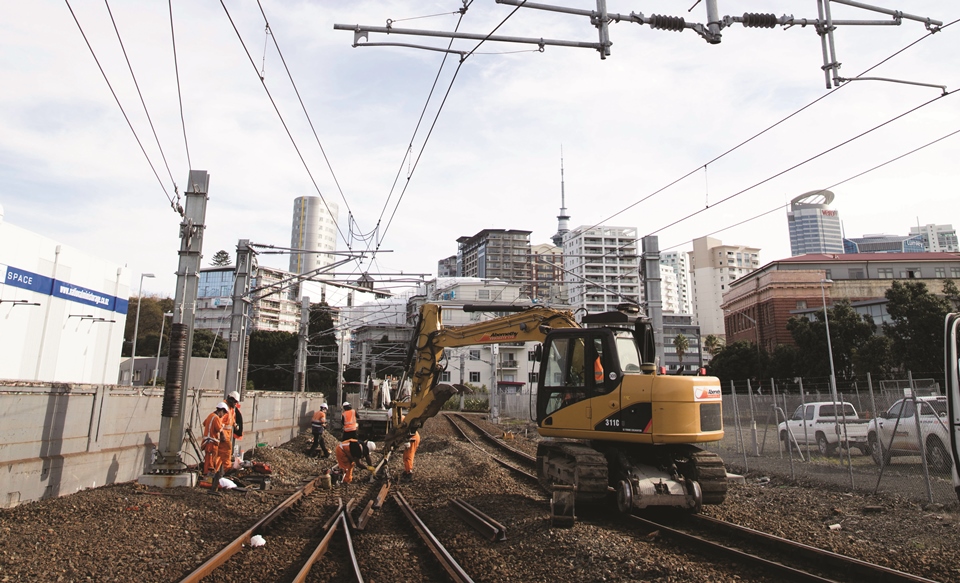
2006 – 2014 – Government funds a series of projects totalling $1.6 billion to modernise and electrify Auckland’s commuter rail system. Passenger numbers soar in response to the improved services.
2008 - The Government buys back Toll's rail and ferry business for $665m, after several months of negotiations. KiwiRail is formed as a single integrated above and below rail business.
2008 – present day - Government funds projects totalling more than $900 million to modernise Wellington’s commuter rail system and allow for longer, faster trains and more services to meet growing commuter demand.
2009 Stratford – Okahukura (Taumaranui) line in Taranaki mothballed following derailment
2011 – New DL freight locomotives introduced as part of wider investment in new freight rolling stock.
2012 – Napier to Gisborne rail line mothballed after severe storm causes extensive damage north of Wairoa.
2016 – Kaikoura earthquake - Main North Line devastated
2017 – Main North line reopened to restricted freight services just 10 months after the earthquake
2018 – Govt funding announced to enable the reopening of the mothballed Napier to Wairoa line.

